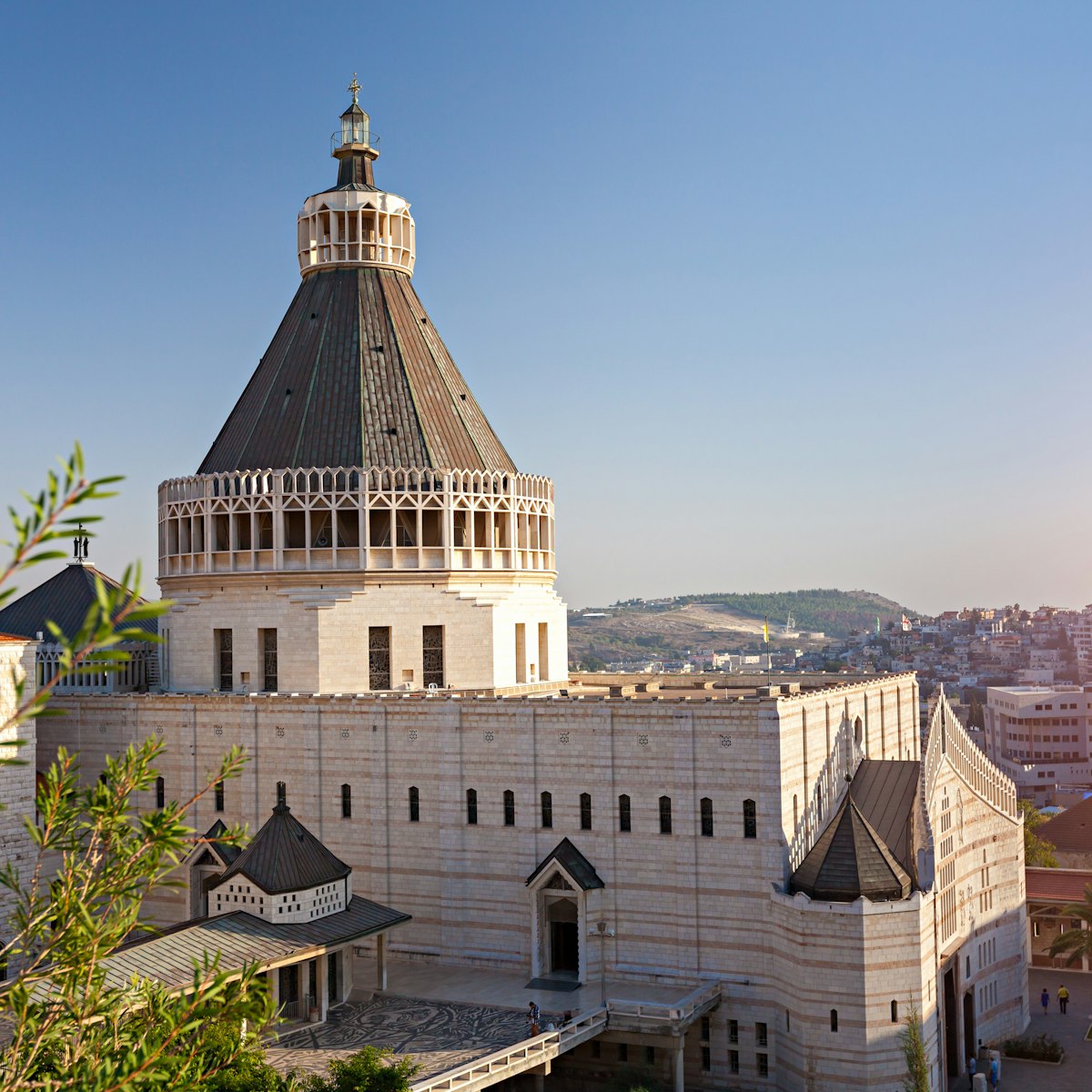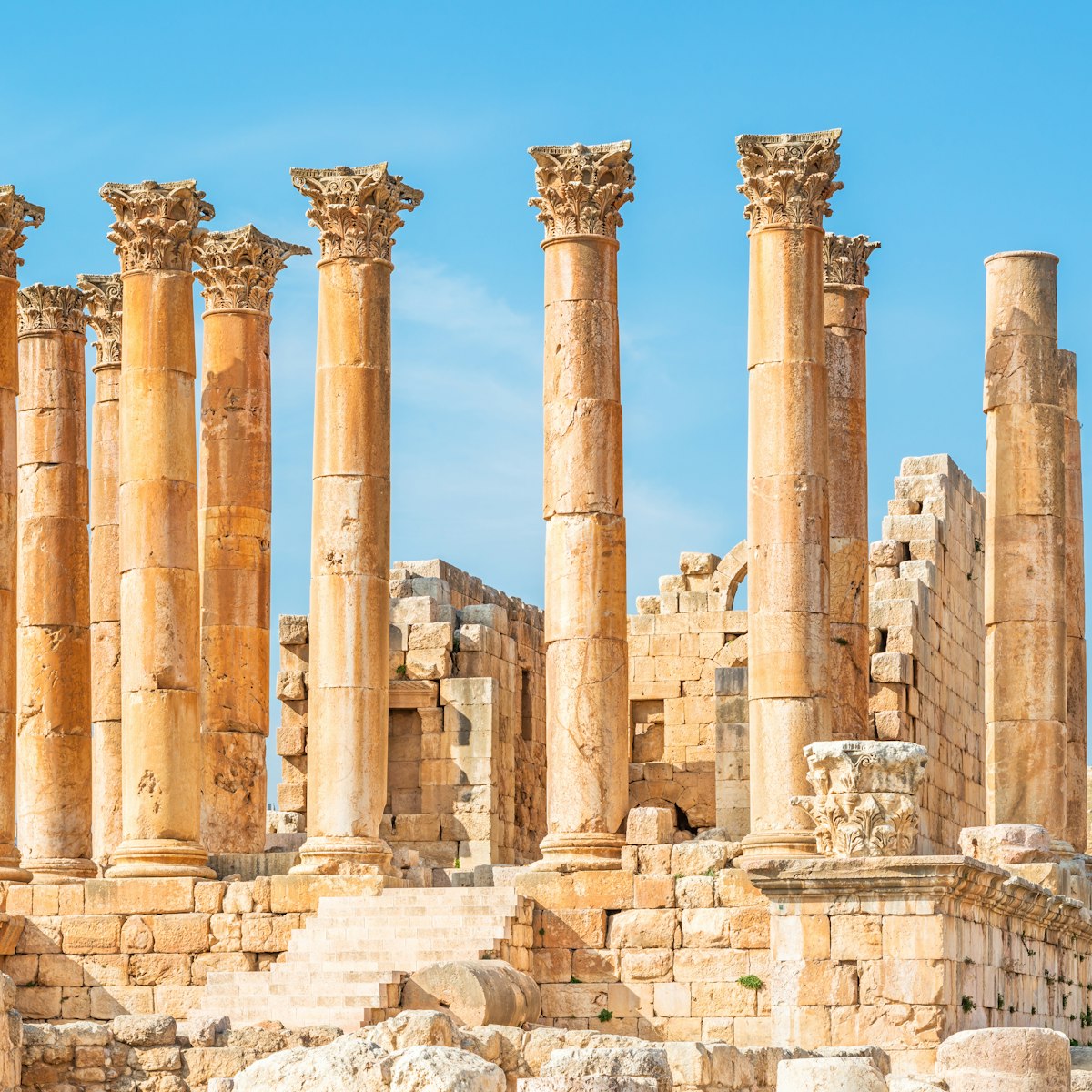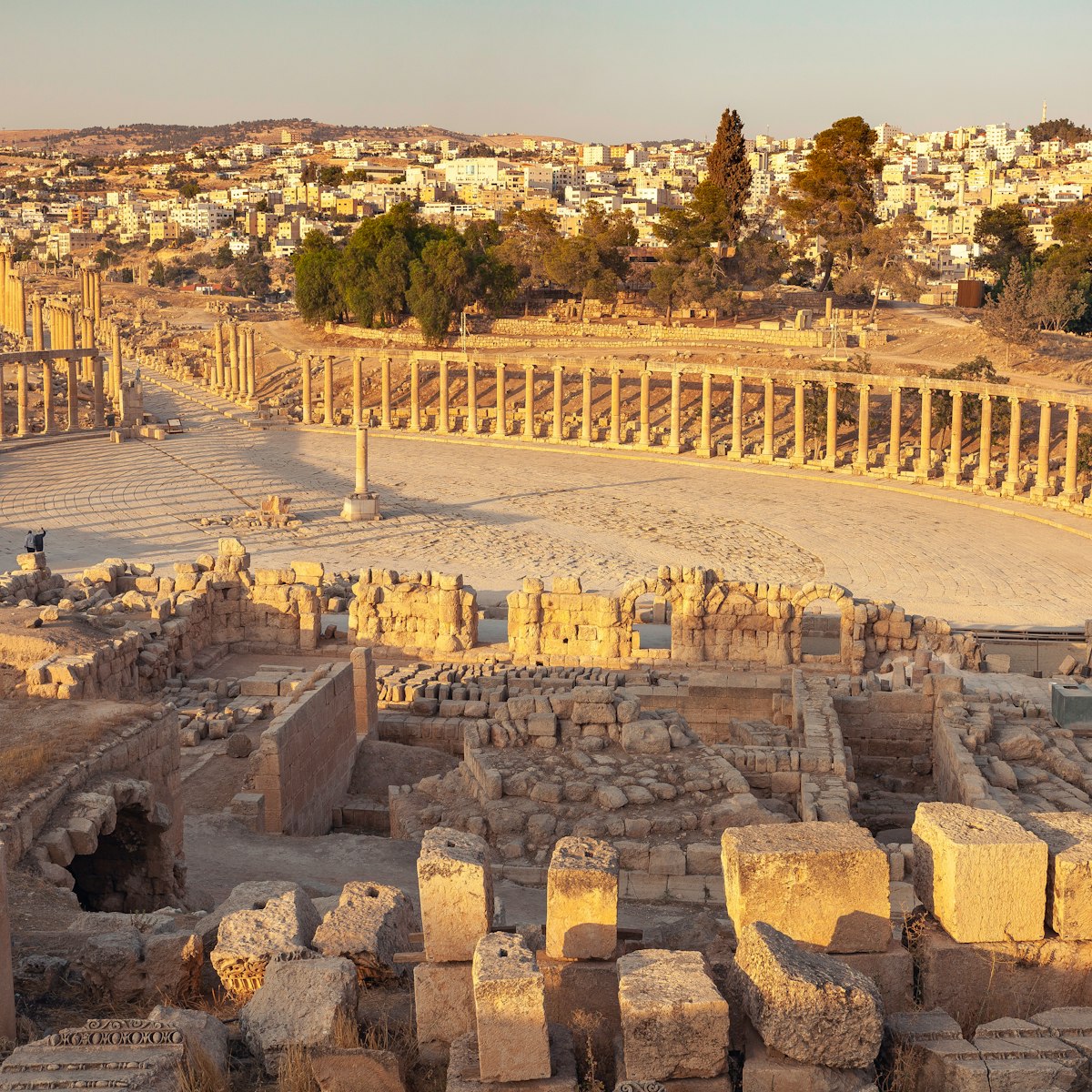Pella, near the modern Arab village of Taqabat Fahl, was one of the cities of the fabled Roman Decapolis. It's of great importance to archaeologists because it reveals evidence of 6000 years of continuous settlement. Many of the ruins are spread out, and a bit of imagination is required to get the most from the site, but the superb setting just above the Jordan Valley can be reward enough, particularly when the land blooms in spring.
At the base of the main mound (on your right as you pass through the entrance) are the limited remains of a Roman gate to the city. Atop the hill are the ruins of an Umayyad settlement, which consisted of shops, residences and storehouses. The small, square Mamluk mosque to the west dates from the 14th century. Carved into the southern side of the hill is the recently excavated Canaanite temple; constructed in around 1270 BC, it was dedicated to the Canaanite god Baal.
The main structure, and indeed one of the better preserved of the ruins, is the Byzantine civic complex church (or middle church), which was built atop an earlier Roman civic complex in the 5th century, and modified several times in the subsequent two centuries. Adjacent is the odeon (a small theatre used for musical performances). It once held 400 spectators, but you will need considerable imagination to picture this now. East of the civic complex church are the low-lying remains of a Roman nymphaeum (public fountain).
Up the hill to the southeast is the 5th-century east church, which has a lovely setting perched high above the lower city. From there a trail leads down into Wadi Malawi and then climbs Tell Al Husn (note the remains of tombs cut into the hillside), atop which are the stones of a Byzantine fort and a Roman temple. There are good views of the Jordan Valley from here.
Outside the main site, about 200m north of the main entrance, are the ruins of a small Abbasid settlement. There are also a few limited Palaeolithic ruins (4km away), Roman baths and a rock bridge (3km away), reached via the road past the turn-off to the (now closed) Pella Rest House.
Enquire at one of Pella's guesthouses about how to get to the rubble of a Hellenistic temple high on Jebel Sartaba to the southeast. From there, Jerusalem is visible on a clear day. The return hike takes a good couple of hours.







